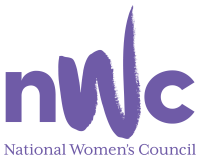Equal but Different - New Report will Change Healthcare Provision in Ireland
Published: Tuesday, November 13, 2012
A new report will change the way the HSE delivers its services to women and men. The report Equal but Different: A Framework for Integrating Gender Equality in Health Service Policy, Planning and Service Delivery is the result of a unique collaboration between the National Women's Council of Ireland (NWCI), the HSE, and a wide range of women's and men's groups.
On the occasion of the Report Launch today Ms Kathleen Lynch TD, Minister for Disability, Equality and Mental Health said:
'Equal but Different provides a framework to ensure that both women and men become an integral part to the development of policy, planning and service delivery within the Health Service Executive. By taking key gender considerations into account, the HSE is taking steps to improve the organisation's ability to respond to need and deliver accessible services, targeting the specific needs of men and of women. This leads to increased customer satisfaction and efficient and effective management of resources.'
Brian Neeson of the Health Service Executive highlighted:
'This report is about building a health system that is responsive to both women's and men's gendered needs. It's about difference, but more importantly it's about fairness. We believe that recognition of gender differences and inequalities will add to the efficiency and effectiveness of health and social care services for both women and men.'
Jacqueline Healy, Health and Human Rights Worker with the NWCI said:
'Healthcare provision has so far been gender blind and this report aims to apply a much needed gender lens to healthcare services in Ireland. Women and men have different health needs throughout their lives. Unequal economic and social roles in the workplace, in the home or in public life between women and men lead to unequal access to healthcare and healthcare outcomes. This new report provides a practical framework to improve service delivery, make better use of resources to address the needs of women and men, save on long term health costs and lower the burden of ill health.'
In addition to NWCI and HSE the following organisations contributed to the report; Department of Health, Department of Justice and Equality, Equality Men's Development Network, Men's Health Forum in Ireland, Irish Cancer Society, Equality Authority and Institute for Public Health.
For further information or a copy of the report contact: Silke Paasche, Communications Officer, NWCI: 085 858 9104
Note to Editors
What: Report Launch 'Equal but different: A Framework for Integrating Gender Equality in Health Service Executive Policy, Planning and Service Delivery' Where: Ashling Hotel, Parkgate Street, Dublin 8 When: 11 am – 12:30 am, registration at 10:30 am
What is Gender Mainstreaming?
Gender mainstreaming is a globally recognised strategy and approach for achieving gender equality. Gender mainstreaming in health is a method for integrating a gender perspective into policy and service delivery, in order to provide equality of access to services, equality of participation and equality of outcomes in health for women and men. An important aspect of gender mainstreaming is that it requires that all policies, plans and service delivery are gender proofed and that gender impact assessment be carried out.
Case Studies
Case study 1: Saving Women's Lives - Gender Mainstreaming in Cardiovascular Health
Gender mainstreaming as an approach can help to uncover some of the biological and social factors that impact on cardiovascular disease. Women and men have different experiences of cardiovascular health, in diagnosis, treatment and health outcomes. However, gender bias exists in that the norm of the heart disease patient has been male, based on male symptoms.
A good example of an Irish initiative on gender mainstreaming, carried out by the Women's Health Council and the Irish Association for Emergency Medicine, led to an assessment of how Emergency Departments assess women with Acute Coronary Syndrome. The research found gender bias in current policy and practice on cardiovascular health, and a lack of knowledge of appropriate ways to provide services and treatment for women. A postcard was produced for health care professionals which recommended that the spectrum of ACS symptoms are considered in women, including chest pain, fatigue, shoulder and neck pain, nausea, abdominal discomfort and synocope.
Case study 2: Tackling Male Obesity
A study of obese men who had attended Community Nutrition and Dietician Services (CNDS) in HSE South in 2008 led to the development of a resource book on best practice approaches for health care professionals working with obese men in a primary care setting.
Male obesity rates have tripled since 1990, resulting in the fact that 43.8% of men are overweight and 25.8% are obese. In particular, visceral obesity is more prevalent among men than women and poses a risk of hypertension, diabetes and metabolic syndrome. Men's diets are less healthy than women's diets and men who are overweight or obese do not see their weight as a cause of concern. Moreover, men's dietary habits are influenced by long working hours, an approach to food that is more pleasure orientated and an association of size with masculinity. Similarly, men are less likely than women to observe advice about healthy eating and consider dieting to lose weight. It was found that men are less likely to be referred to lifestyle counselling for obesity and that obesity is largely ignored in primary care settings.
As a result of the specific work carried out by the Community Nutrition and Dietician Services it was found that lifestyle interventions that are tailored to men's dietary and lifestyle behaviours can have a positive impact in raising men's awareness and changing men's dietary habits, in promoting higher levels of physical activity and reducing alcohol consumption. In particular, the approach showed the importance of a patient-centred approach whereby men were given personal choice and took responsibility for their health in a process described as shared decision-making.
